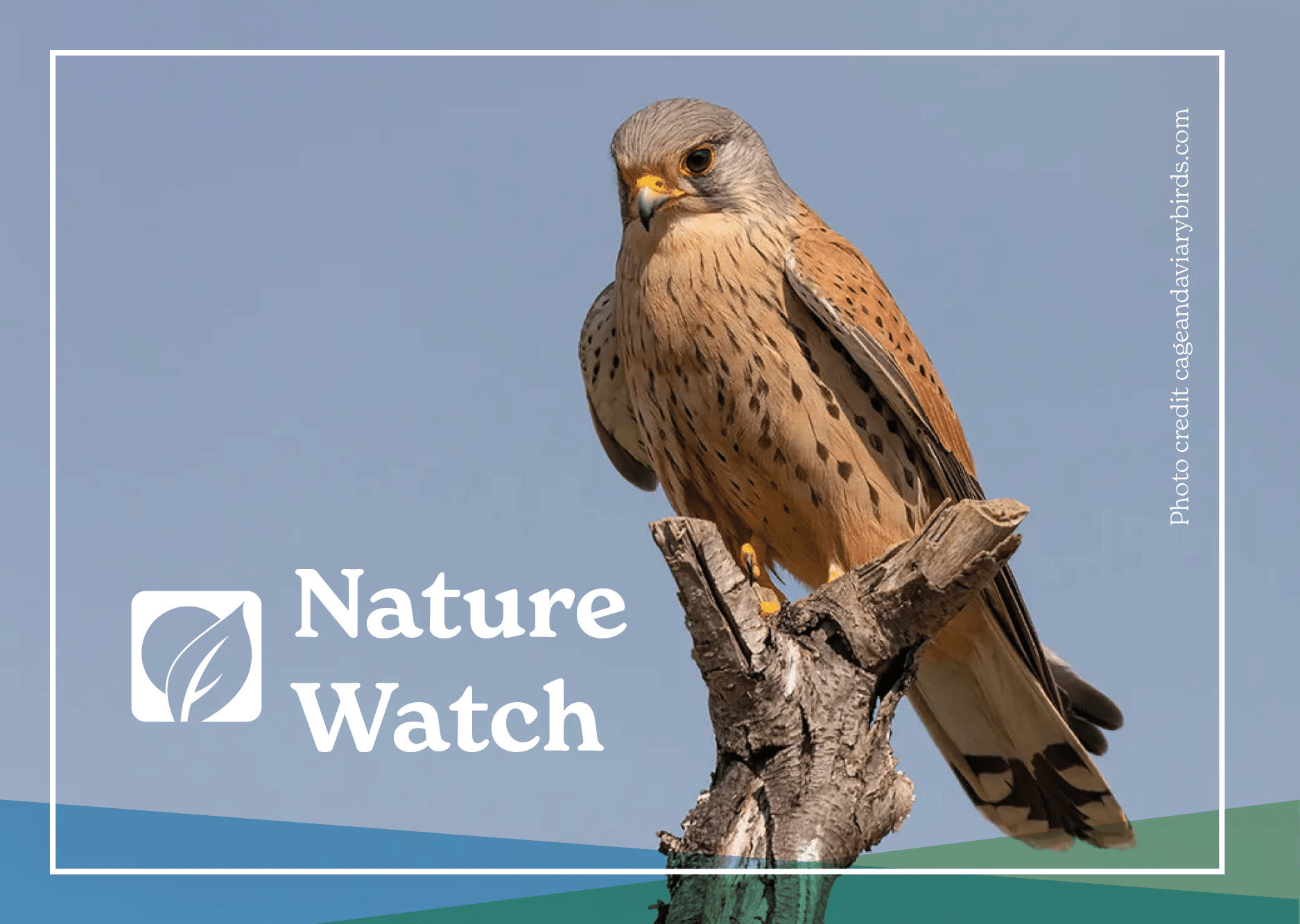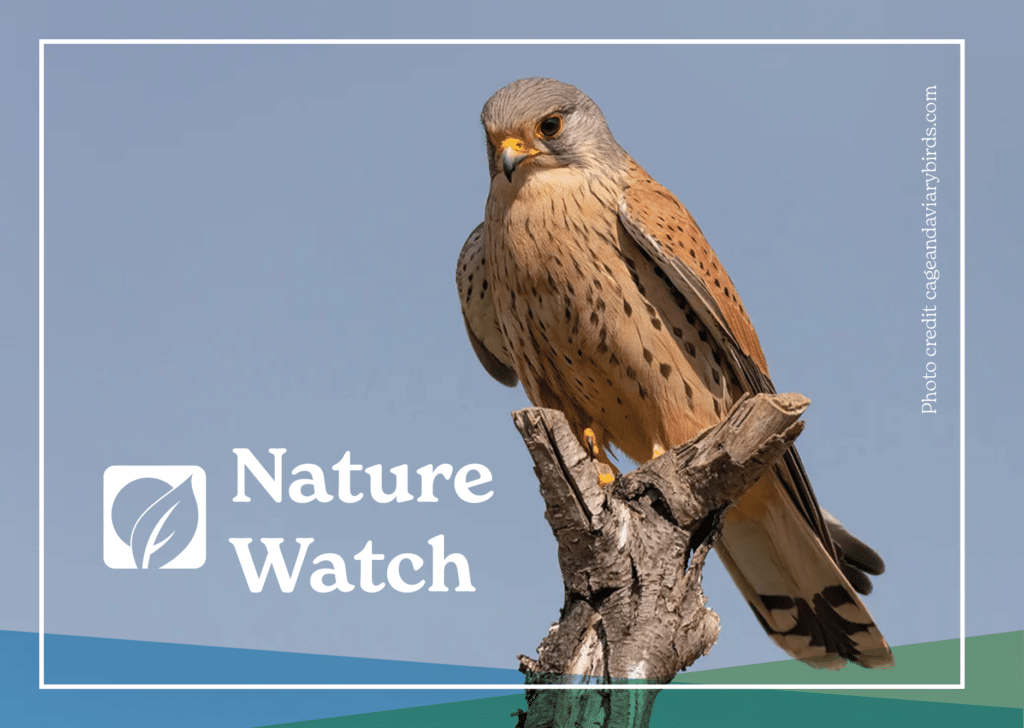Thanet Earth Nature Watch

We have a total of 15.4ha put aside for native wildlife habitat. We pride ourselves in being dedicated to biodiversity and looking after the land we are based on. With Nature Watch, we bring you some of the amazing wildlife and wild flowers we see on and around our site at Thanet Earth.
Kestrel
Scientific name: Falco tinnunculus
Bird family: Falcons
UK conservation status: Amber
Protected by: The Wildlife and Countryside Act 1981
Length: 32-35cm
Wingspan: 71-80cm
Weight: 156-252g
Kestrels are a familiar sight at Thanet Earth with their pointed wings and long tail, hovering over the area between Reception and Dry Stores. Sadly numbers of kestrels have declined since records from the 1970s, probably as a result of changes in farming and so it is included on the Amber List.
They have adapted readily to man-made environments and can survive in city centres. With their keen eyesight, sharp talons and strong beak, kestrels are well adapted to catching small agile prey. They eat small mammals and birds, worms and insects. Kestrels are masters of stationary flight, and hover-hunt extensively. They also hunt from perches, altering their hunting method to suit prey type, weather conditions and energy requirements.
Voles are by far the most important food for kestrels, although they regularly take other small mammals such as wood mice, shrews, small birds, insects and earthworms. In towns they prey on small birds more frequently due to the lower availability of small mammals. Several hunting techniques are used by kestrels, but the most well-known is the hover. A kestrel will fly into the wind and use its tail and wings to hold its position in the air. Keeping its eyes fixed on the ground, it will swiftly drop to pounce on any prey sighted.
A kestrel is capable of locating its prey at remarkable distances – it can see and catch a beetle 50m from its perch. Kestrels need to eat 4-8 voles a day, depending on the time of the year and the amount of energy-consuming hover-hunting they do. They have a habit of catching several voles in succession and storing some for later.
The stored food is usually eaten the same day just before dusk. This reduces the risk that the bird would have to go to roost on an empty stomach.
